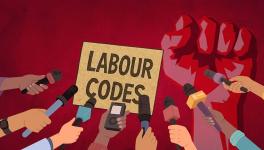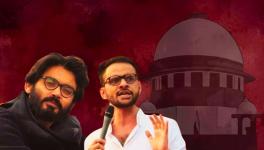Perils of Legislating From Courtrooms
The government has recently instructed the ministry of law and justice to identify reasons for the burden on the Indian courts and suggest possible solutions. The burden of arrears and delays is indeed high: More than 2.8 crore cases are pending with just the lower judiciary.
The government wants “structural” reform, and the Indian legal system indeed needs those. The Supreme Court is considered the bastion of fairness and excellence. Constitutional anatomy vests in it the power to take any decision in the interest of complete justice. Under the garb of these powers, the SC has lately fallen afoul of a double-pronged error. On the one hand is judicial overreach. And the flip side of this is under-reach.
It is here that the Supreme Court can begin, even before widespread reforms are kick-started. Studying judicial overreach is critical at this juncture because it has affected the functioning of the judiciary to a large extent. Under-reach implies that the Supreme Court has been regularly abandoning its constitutional commitments while disposing of the constitutional and statutory duties of other organs of government. This is a major but widely-ignored reason for the increasing logjam of cases in court.
The overreach (and consequent under-reach) amount to the judiciary misinterpreting its constitutional obligations, as was evident in the national anthem case, wherein the Supreme Court stepped into the shoes of a strict headmaster to direct the mandatory playing of the national anthem in cinema halls. This order was no less than a firman in the garb of patriotism. The court ignored its own judicial precedents, including Bijoe Emmanuel (1986), whose concluding lines should have otherwise been enough: “...our tradition teaches tolerance; our philosophy preaches tolerance; our constitution practices tolerance; let us not dilute it.”
The ruling in Bijoe, also known as the Jehovah’s Witnesses case, says, “The question is not whether a particular religious belief or practice appeals to our reason or sentiment but whether the belief is genuinely and conscientiously held as part of the profession or practice of religion... If the belief is genuinely and conscientiously held it attracts the protection of Article 25...” Yet, the Supreme Court surpassed even the statute—the National Honour Act of 1971—which specifies that the audience is not obligated to stand up during the course of a newsreel, documentary or film.
Other instances of judicial overreach include the ban on sale and purchase of liquor within 500 metres around highways, which it cleared without considering the constitutional validity and economic aspects involved. The apex court also banned the use of firecrackers during Diwali, without considering the constitutional validity or economic aspects of the decision again.
In each instance, the courts may have adjudicated with bona fide intentions. However the question is not about intention but jurisdiction. When the judiciary is not subject to constitutional restraints, judges tend to depart from legal positivism. The strict interpretation and application of law is exchanged for a tendency to exercise arbitrary discretion. Then the logic underpinning legal interpretations veers on ‘sociological jurisprudence’—which calls for construing the law in the social context.
Excessive application of this form of interpretation confers an eccentricity to judge-made law. It makes judges to think and act like law-makers and administrators. The result is excessive diversification in the role of the judiciary, taking it beyond the scope of legitimate powers. It also wastes time, energy and the resources of courts.
The paradox in India is that the Supreme Court is often occupied in making policies and enforcing laws while the number of pending cases keeps growing. It is now at 61,436, an illustration of how overreach results in under-reach. The more courts stray from their cardinal role, the more they must neglect their core duties. Seen this way, the lack of judges (a near-40% vacancy), the high number of pending cases, procedural complexities, inaccessible legal aid, delays in decision-making and so on are the consequences of a dysfunctional judicial system.
As the error is double-layered, the remedy needs to be double-pronged too. The judiciary needs to curb over-activism and Parliament needs to re-awaken its activism within constitutional boundaries. The quality of legislators who are gaining entry into Parliament cannot be an excuse for judges legislating in the courtrooms. For, when judges try to become good law-makers, their energy is diverted, leaving their judicial unfinished or unsettled. The only solution is for the legislatures to get better at their work and let judges improve at theirs.
Every institution has its own role and functions. Attempts to disturb this division of powers lowers efficiency and has detrimental consequences. The judiciary can cure itself better than anyone else by prioritising its actual priorities under the constitutional framework. For, no one is better at interpreting the constitution than it is.
Even before the ministry of law and justice suggests measures to reduce the number of cases awaiting the Supreme Court’s attention, each branch of government must recall and reaffirm their respective constitutional duties.
Anchal Bhatheja and Shailja Rawal are students at the National Law School of India University, Bangalore.
Get the latest reports & analysis with people's perspective on Protests, movements & deep analytical videos, discussions of the current affairs in your Telegram app. Subscribe to NewsClick's Telegram channel & get Real-Time updates on stories, as they get published on our website.
























